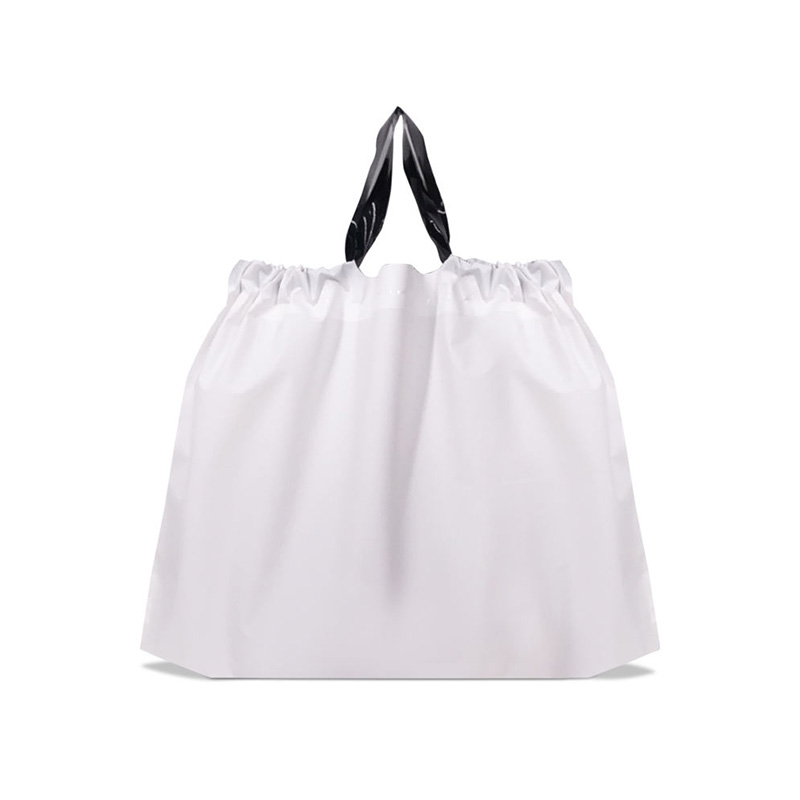Sale China Plastic Shopping Bags With Handles Wholesaler
In the realm of consumer packaging, plastic shopping bags with handles have become a staple in the retail industry. These bags are designed to carry a variety of items, from groceries to clothing, and are expected to meet the needs of diverse consumer groups. The question of whether the design of plastic shopping bags with handles incorporates ergonomic principles is crucial, as it directly impacts the user experience and the overall sustainability of the product. This article delves into the ergonomic design considerations for plastic shopping bags with handles, examining how these factors can enhance both user comfort and environmental responsibility.
Ergonomics, also known as human factors engineering, is the scientific discipline concerned with the understanding of the interactions among humans and other elements of a system. When applied to the design of plastic shopping bags with handles, ergonomics aims to ensure that the bags are comfortable to carry, easy to grip, and do not cause strain or discomfort to the user.
One of the primary ergonomic considerations is the handle design. Handles should be wide enough to distribute the weight of the contents evenly across the user's hand, reducing the risk of hand fatigue and potential injury. The material of the handle should also be considered; it should be durable yet soft enough to avoid cutting into the user's skin during use.
The grip strength of plastic shopping bags with handles is another critical ergonomic factor. A bag that slips from the user's hand can cause frustration and potential damage to the goods being carried. To address this, designers may incorporate textured surfaces or non-slip coatings on the handles to improve grip. Additionally, the stability of the bag when loaded is essential. The bag's base should be wide enough to provide a stable platform, preventing the bag from tipping over when placed on uneven surfaces.
The load capacity of plastic shopping bags with handles is directly related to ergonomics. A bag that tears or breaks under the weight of its contents not only fails in its primary function but also leads to a negative user experience. Designers must consider the strength of the plastic material and reinforce the handles and seams to ensure the bag can support the intended load without failure.
In some cases, the design of plastic shopping bags with handles may include adjustable features, allowing users to modify the length of the handles to suit their comfort. This adjustability can cater to users of different heights and preferences, ensuring a more personalized and comfortable carrying experience.
The environmental impact of plastic shopping bags with handles is also an ergonomic concern. The bags should be designed with sustainability in mind, using materials that are recyclable or biodegradable. The design should also encourage reuse, with a durable construction that can withstand multiple uses before disposal.
Ergonomic design should also be inclusive, considering users with different abilities. This includes designing plastic shopping bags with handles that are easy to open for those with limited dexterity, using colors and patterns that are easily distinguishable for users with visual impairments, and ensuring that the bags are lightweight enough for users with mobility issues.
The design of plastic shopping bags with handles is a multifaceted process that must take into account ergonomic principles to ensure user comfort, functionality, and environmental responsibility. By considering grip strength, load capacity, adjustability, environmental impact, and inclusive design, manufacturers can create plastic shopping bags with handles that not only meet the needs of consumers but also contribute positively to the environment and society as a whole. As the retail industry continues to evolve, the integration of ergonomics in the design of plastic shopping bags with handles will play a crucial role in enhancing the user experience and promoting sustainability.

 English
English Español
Español عربى
عربى







